Biomedicine, Biomarkers, Biomechanics and Predictive MedicinePersonal
Ana Luisa Villanueva
Chief Medical Officer MAPFRE RE
Madrid - Spain
Biomedicine, gathering up all science
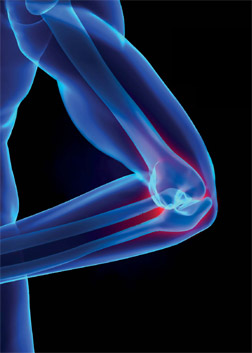
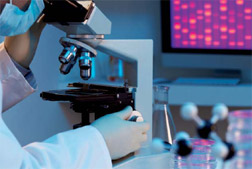
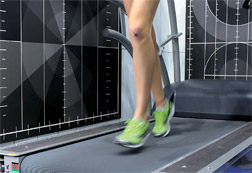
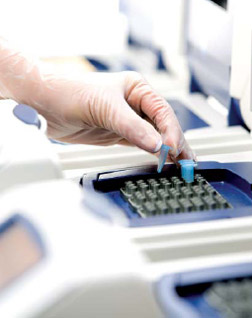
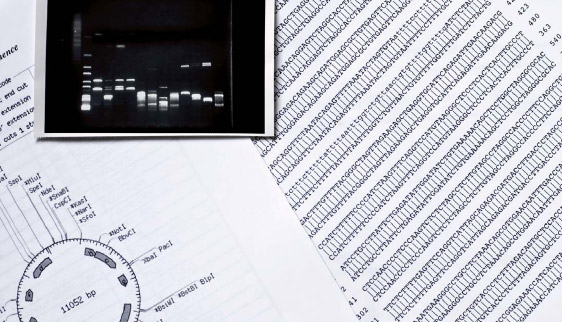

We are living in the “BIO Age”, that is the age of the combination of science and technology. Everything is redefined from a global perspective, using all available knowledge and applying principles that were previously just considered for a particular specialty.
Bioscience encompasses different scientific fields such as biology, chemistry, physics, medical technology, pharmacy, information technologies, nutrition and environmental science.
Scientific and technological developments have given light to new disciplines such as genetic engineering and promise to bring in innovative solutions to key challenges in the fields of medicine, food, agriculture and environment.
Medicine is redefined as Biomedicine which entails the knowledge and research common to medicine, veterinary, odontology and Biosciences such as biochemistry, chemistry, biology, histology, genetics, embryology, anatomy, physiology, pathology, biomedical engineering, zoology, botany and microbiology.
Biomedicine opens for new ways for new drug developments, improving early diagnosis and quality of treatment
Biomedicine implements natural science principles to clinical practice through the study and research of patho-physiological processes, ranging from molecular interaction to the dynamic function of the body, using the methodology applied in biology, biochemistry and physics.
This approach allows the development of new drugs and the improvement of early diagnosis of disease, facilitating the evaluation of the quality of new treatments.
Like all areas taking part of the individual’s activity, there is a need to measure or asses the development of such activities. To do so, we use tools similar to those used for management. These management indicators such as ratios of investment, production, sales and benefit, among others, will help us to learn the business we are in at a glance.
Biomarkers: the modern healthcare alerts
In Biomedicine we use substances or parameters that work as signals of a biological state, the Biomarkers.
Biomarkers are used to validate diagnosis/ prognosis as a therapeutic target.
Biomarkers are indicators at molecular, biochemical or cell level which are present in particular situations. Not all found molecules are valid as indicators, they must meet certain criteria.
Most Biomarkers studied up to date are based on their utility from the standpoint of diagnosis/prognosis, although we must remember that, ideally, they should also provide a therapeutic target. There are other Biomarkers with no diagnostic or therapeutic value that provide information on the genesis of the disorder under study.
| Specific | For a particular disease. |
|---|---|
| Sensitive | Easily quantifiable. |
| Predictive | Relevant to disease progression and/or treatment. |
| Robust | Fast, simple and with cost analysis. |
| Estable | Equal concentrations at any time of the day. |
| Non-invasive | Easily obtained samples (blood & urine). |
| Preclinical & clinical importance | Valid for animals / cells models & humans. |
Action points of the ideal markers
The ideal Biomarkers must enable:
- Early diagnosis of disease.
- Screening to test candidates for drug therapy.
- The identification of subgroups of patients responding to treatment.
- The follow-up of the therapy.
- The evaluation of progression/regression of the disease.
Nowadays, there are several types of Biomarkers:
Cardiovascular:
Mainly involved in:
- Development and rupture of the atherosclerotic plaque
- Ischaemic heart disease and infarction.
Tumor:
For early diagnosis, efficiency of treatment and follow-up of disease in cancers such as:
- Breast
- Lung
- Colon
- Ovary
- Liver
- Thyroid
- Bladder
- Endometrial
- Cervix
- Skin
- Head & Neck
- Prostate
- Testes
Bone remodeling:
Linked to:
- Osteoporosis
- Bone resorption
Muscle function:
Mainly linked to:
- Miositis
- Degenerative disease
Linked to brain injury
Linked to Glucose metabolism:
Next table shows a detailed list of these Biomarkers.
| Related to | Marker | |
|---|---|---|
| Development and rupture of the atherosclerotic plaque |
|
|
| Ischaemic heart disease and infarction |
|
|
| Organ | Marker |
|---|---|
| Thyroid |
|
| Gastrointestinal |
|
| Liver |
|
| Bladder |
|
| Ovary |
|
| Endometrium (uterus/womb) |
|
| Cervix |
|
| Skin |
|
| Head & Neck |
|
| Lung |
|
| Breast |
|
| Prostate |
|
| Testes |
|
| Related to | Marcker | |
|---|---|---|
| Bone remodeling |
|
|
| Muscle function |
|
|
| Brain injury |
|
|
| Ischaemic heart disease and infarction |
|
|
| Glucose metabolism |
|
|
The development of Biomarkers is closely related to General Biopathology. This term includes all diseases with an organic origin affecting the human body.
Thanks to the global vision on the study of this General Biopathology and the use of new technologies, indicators with multiple applications are under development to enable understanding the physiopathology or genesis of the disease and its clinical manifestation.
Within the General Biopathology, there is the Special Biopathology, dedicated to a specific range of action. In Insurance Medicine, in addition to general medical considerations, three more specific areas can be found:
- Forensic or Medico-Legal Biopathology.
- Occupational Biopathology.
- Sports Science Biopathology.
Inside the Applied Special Biopathology, there is another BIO element, Biomechanics.
Biomechanics and physics
Biomechanics studies the mechanical impact on the tissues of our body
Biomechanics refers to the science that studies the mechanical impact (force, acceleration, etc) exerted on biological material. This damage from impact can either be a failure in the mechanical function, a bone fracture, a muscle rupture or a functional injury.
Biomechanics
- Identifies and determines the mechanism of injury.
- Quantifies the response of the human body, systems, organs and tissue to a particular action.
- Determines and quantifies the threshold of the injury.
- Develops and designs materials and structures to reduce and manage the impact and energy transfer to the body.
- Develops efficient Biomechanical tools to study the behaviour of the body and materials.
Below there is an example of the integrated protocol where biomechanical exam and biomarkers are used.
Table 5 Integrated Medico-legal protocol for bodily injury evaluation.Source: “Biomecánica en la Valoración Médico Legal de las Lesiones”. 2011. BAASYS. Editors: Santiago Delgado Bueno. Domingo Montes de Oca Hernández and Néstor Pérez Mallada
-
Medical history and evaluation of data
- Accident report (delta-V or speed evaluation)
- Medical records
-
Patient Exam
-
Physical exam
-
Complementary test
- A.1. Biomechanical exam
- A.2. Radiological tests
- MRI LNC & WAD*
- Sonogram
- A.3. Lab test (general & Biomarkers)
-
Complementary test
-
Psychopathologic exam
- Complementary test
-
Physical exam
-
Medico-legal Remarks
-
Injury and sequelae
- Healing time
- Days
- Previous state-preexisting condition
-
Medico-legal criteria for causation. La “conditio sine qua non” or “but for causation”
- Chronology
- Biomechanical compatibility (enough intensity and adequate mechanism to cause injury)
- Exclusion
- Simulation
- Sequelae
Tabla sobre las Consideraciones médico legales Bareme (23,24) European (25) AMA (26) RD 1971/1999 (27) Int. Inval. Melennec (28) 30/1995 Act Law 34/2003 Impairment of Pschyco-physic Integrity AIPP Total body deficiency Disability degree examination Permanent physiological impairment (PPI) or functional disability or personal disability Points % % % % -
Injury and sequelae
- Medico-legal Conclusions
* RMI: Magnetic Resonance Imaging, NCI: Non-Contiguous Injuries, WAD: Wishplash Associated Disorders
There are several Biomechanical evaluation systems:
- Surface electromyography (SEMG), It records the electrical potential generated in muscle membrane through electrical signs.
- 3D motion capture. Photogrammetry. It allows capturing the movements of one or multiple joints in 3D, as well as its characteristics of speed, acceleration and repetition of execution of movement taking place in the worker.
- Dynamometric Platforms. Platform placed on the floor embedding three axis pressure sensors.
- Isokinetic, isotonic and isometric machines. These machines use dynamometers to register the force from a group of muscles (speed, power, load and osteo-muscular span).
In an isokinetic movement, speed remains constant. In an isotonic movement, the load remains constant and speed changes according to the joint work and in an isometric movement, there is no joint movement.
| Biomechanical variable | Equation | Graph |
|---|---|---|
| Shoulder_feet angle made between shoulder axis and feet line at the moment of releasing disc | 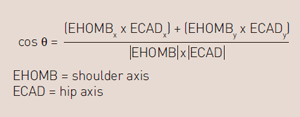 |
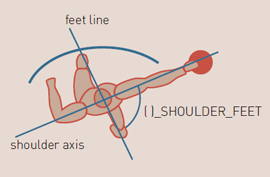 |
| Arm_feet angle made between executing upper limb and feet line at the moment of releasing disc |  |
 |
| Shoulder_hip angle made between shoulder and hip axis | 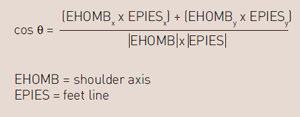 |
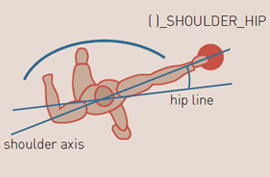 |
| Before releasing | Time variable |
|
|---|---|---|
| Linear spatial variable |
|
|
| Angular spatial variable |
|
|
| Temporary spatial variable |
|
|
| After releasing | Spatial variable |
|
Biomechanical report provides the following information:
- The moment of maximum load (peak load during exercise).
- The maximum load/force exerted to enable the movement of an object.
- The power exerted by a group of muscles.
- The speed at which muscle work takes place.
- Resilience and neurophysiologic control.
In short, it helps to:
- Decide on whether or not pre-injury normal tasks can be still performed.
- Quantify the loss of capacity, if any.
- Asses the chronicity of injuries and sequelae.
- Promote work re-entry without relapse.
- Know if the activity performed causes overload.

Biomechanics Applications
Biomechanics application to Medico-Legal Biopathology contributes to:
- Provide the cause/effect mechanism; biomechanical compatibility or the relationship between intensity and mechanism of production.
- Identify simulation.
- Evaluate sequelae.
- Propose therapies to promote getting back to daily life.
- Occupational therapy/rehabilitation to perform other workplace tasks.
As to Biomechanics application to Occupational Biopathology, they:
- Determine the worker capacity to automatically execute actions and tasks from his/ her daily work activity.
- Identify if the injury is caused by occupation or other common causes.
- Provide biomechanical tests, changing in complexity according to each individual needs, to analyze and quantify the injuries.
- Develop preventive rehabilitation programmes.
- Identify mismatching between functional capacity and workplace requirements.
- Identify permanent and temporary disability.
- Identify simulation.
Biomechanics can be applied to occupation and sports to understand the cause/effect mechanism and introduce re-entry programmes for daily living activities and work
Selection of Biomechanical tools is based on what to asses: movement, force, movement span and execution, peak power, performed work and its speed of execution, to name a few.
Biomechanics application to Sports Science Biopathology results in a great number of improvements:
- Quantitative and qualitative analysis of training.
- Assessment of sports technique, how to train and improve it.
- Definition of efficiency criteria.
- Definition of Biomechanical variables related to technical issues.
- Identification of mismatching between functional capacity and game requirements.
- Know the activity performed and evaluate the injuries that may occur.
What if we now introduce this BIO perspective into genetics?
The idea of genetic code being similar to a personal barcode has changed; it has shifted from being static into dynamic.
New developments in genetics have found out that genes do not work on their own but create networks to interact with each other. Genomics studies the interaction and when it is applied to the individual’s response to drugs it receives the name of Pharmacogenomics.
Genes do not work on their own but interact with each other creating differences between individuals
The presence of specific genes involved in certain diseases and treatments can be taken as an indicator or a Biomarker. This is what has been done for some conditions. The identification of genes present in some daily common diseases, such as clotting factors deficiency; Haemophilia, the most common type, Huntington’s disease or polycystic kidney disease, is a fact.
The cost and trouble in research makes it difficult to look for Biomarkers at the genetic level, for all disorders. Nowadays, the main causes of death, such as cancer or cardiovascular diseases are getting all the attention.
The most well known genes are BRCA1 and BRCA2 linked to certain breast tumors. Their presence has a close relationship with survival and treatment outcome.
Then we are heading for a more individualised and personalised medicine where the presence of indicators may enable to asses possible risk, a Predictive Medicine.
Current Biomedical Research legislation only allows predictive testing for genetic disorders to identify carriers of the gene responsible for a disease or detect a predisposition or susceptibility to a disease for medical or research purposes; in case of genetic counseling, if prescribed; in case of study of different individual’s response to drugs; for geneticenvironmental interactions or research on molecular basis of disease.
Medicine is becoming more individualised and personalised, looking for indicators in order to identify risk situations
We should not take this decision as restrictive but as a preserver of diagnostic or prognostic good sense, thus discouraging to develop an industry of indicators that could take us to predict something that will never happen.
The future of healthcare for diseases such as cancer will be based on using Biomarkers to detect the early stage of a disease, individualising the diagnosis, tumor classification and choice of therapy.
We have currently identified a large number of candidates Biomarkers, including proteins, nucleic acids, metabolites and tumor cells but yet, validation methods for efficiency and more rigorous clinical trials need to be developed.
Conclusions
Biomarkers use enables to identify the clinical state of the patient, asses the evolution of injuries, add prognostic criteria and evaluate the effectiveness of a treatment.
Bodily injury studies and Biopathology require the use of Biomarkers to develop themselves and develop Biotechnology.
Biomarkers allow having a more homogeneous bodily injury classification of patients.
Biomechanics along with Biomarkers complete the bodily injury exam, provide medico-legal information, save resources on work re-entry programmes and disability evaluation, optimize therapy, anticipate future injuries and refine and improve sports techniques.
Medicine is heading for a personalised and individualised approach but Predictive Medicine should not be used as determinant of a future event but as a predisposition.
Bibliography
Christopher J., O’Donell, M.D., Elisabeth G. Nagel, M.D. ; N Engl J Med 2011; 365:2098-109
JL Martín-Ventura; LM Blanco-Colio, J Truñón, B Muñoz Garcia J Madrigal, JA Moreno, M Vega, J Egido; Rev Esp. Cardiol. 2009; 62(6): 677-88; Vol 62
Biomarkers in Medicine 2011 Vol. 5 2012 Vol. 6
The open Biomarkers Journal
Biomarkers 2011 Vol.16 2012 Vol.17
“Biomecánica en la Valoración Médico Legal de las Lesiones”. 2011. BAASYS. Editors: Santiago Delgado Bueno. Domingo Montes de Oca Hernández and Néstor Pérez Mallada.
“Biomecánica en Medicina Laboral”. 2011. BAASYS. Editors: Santiago Delgado Bueno. Domingo Montes de Oca Hernández and Néstor Pérez Mallada.
To think about
We must not forget that the individual is in constant interaction with the environment. This interaction may change his predisposition when coming in contact with new elements.
Biomarkers research and new Predictive testing, adjusted to cost effective criteria, need to be included in Risk Assessment for Insurance Medicine to be in parallel with science and respect the principles of insurance, not letting scientific developments read “the chance of an adverse situation” as a “relative certainty for such adverse situation to happen”.



